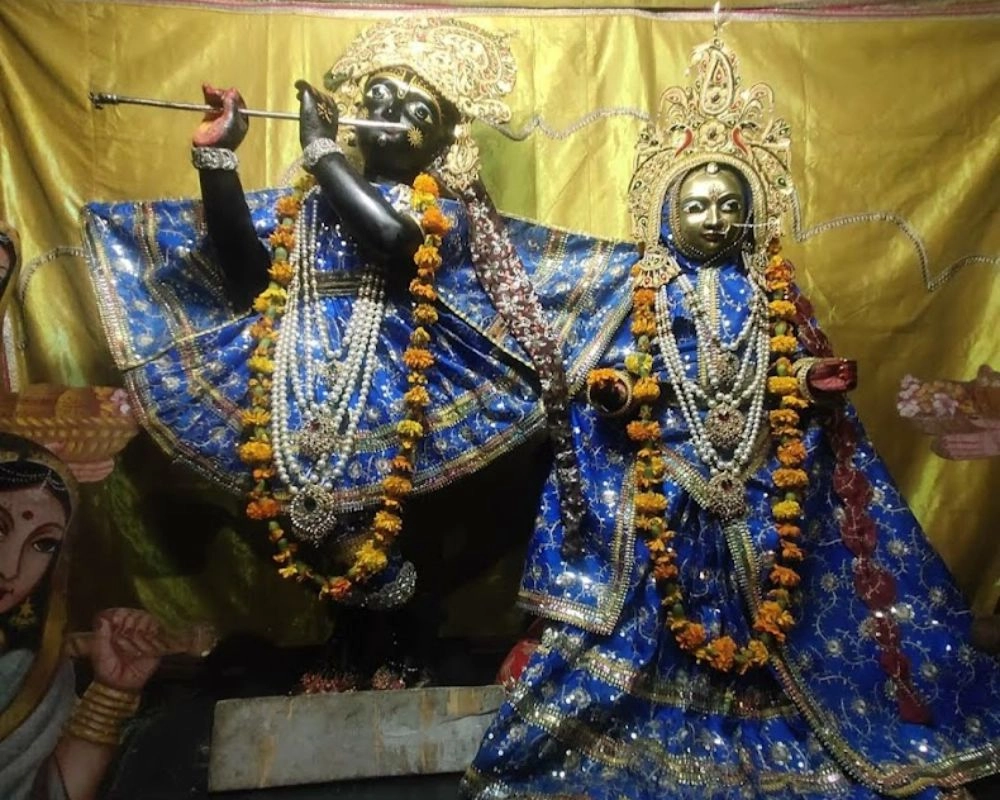Prem Mandir
Nestled in the sacred town of Vrindavan, Uttar Pradesh, Prem Mandir (Temple of Love) stands as a maj...

Among the numerous temples that beautify the holy land of Vrindavan, the Jaipur Temple, also known as the Radha Madhav Mandir, holds a unique place for its majestic architecture, royal heritage, and deep spiritual significance. Built by the rulers of Jaipur, this temple stands as a powerful symbol of regal devotion to Radha and Krishna.
The Jaipur Temple was built in 1917 by Maharaja Sawai Madho Singh II of Jaipur, Rajasthan. The king, a devout follower of Lord Krishna, wanted to build a grand temple in Vrindavan that reflected the royal Rajput style of architecture while offering a tranquil space for devotion.
It was constructed to house the deities Sri Radha Madhav, representing the divine love between Lord Krishna and Radha Rani. The temple continues to be maintained by the Jaipur royal family, and their tradition of devotion to Krishna is evident in the temple’s grandeur and spiritual environment.
The Jaipur Temple is an architectural masterpiece that blends Rajasthani Rajput and Mughal styles. Made from red sandstone, the temple’s design echoes the style of grand palaces and forts of Rajasthan.
Massive Pillars and Arches: The temple features beautifully carved columns, intricate jali (lattice) work, and arched doorways.
Red Sandstone Construction: Built using the same stone as Jaipur’s famous palaces, giving it a royal and timeless appearance.
Spacious Courtyard and Halls: The vast compound allows devotees to peacefully sit, meditate, or take part in bhajans and kirtans.
Sanctum Sanctorum: The main shrine houses the deities Radha Madhav Ji, who are worshipped with deep reverence and joy.
The Jaipur Temple is not only an architectural wonder but also a vibrant center of Gaudiya Vaishnavism. The deities of Radha-Madhav are central to Krishna’s leelas in Vrindavan. Daily worship and rituals here are filled with music, devotion, and traditional Vaishnava customs.
The temple is also a spiritual retreat for many pilgrims and saints who seek the bliss of Vrindavan’s divine vibrations.
The Jaipur Temple comes alive during major festivals, with thousands of devotees gathering to participate:
Janmashtami – The appearance day of Lord Krishna is celebrated with grand decorations, kirtans, and special darshan.
Radhashtami – The temple is adorned with flowers and lights, and Radha Rani is offered special bhog and aarti.
Holi – The celebration of colors is observed with joy, music, and devotional singing.
Jhulan Yatra – Radha-Madhav are placed on a beautifully decorated swing during this monsoon festival.
Devotees are welcome to witness the Mangala Aarti (early morning ritual), Shringar (decoration), Bhog offering, and Sandhya Aarti (evening prayer).
Temple Timings:
Morning: 5:00 AM – 12:00 PM
Evening: 4:00 PM – 9:00 PM
Entry Fee: Free
Best Time to Visit: During Kartik Month, Holi, and Janmashtami
The Jaipur Temple is located in the Sevakunja area of Vrindavan, very close to other famous sites like Radha Damodar Temple and Nidhivan.
Nestled in the sacred town of Vrindavan, Uttar Pradesh, Prem Mandir (Temple of Love) stands as a maj...
Nestled in the narrow, vibrant lanes of Vrindavan, Uttar Pradesh, the Banke Bihari Temple is one of ...
Rising in the heartland of Lord Krishna’s birthplace, Vrindavan Chandrodaya Temple is not just a tem...
The ISKCON Temple, often recognized by its beautiful domes, serene atmosphere, and the enchanting ch...
